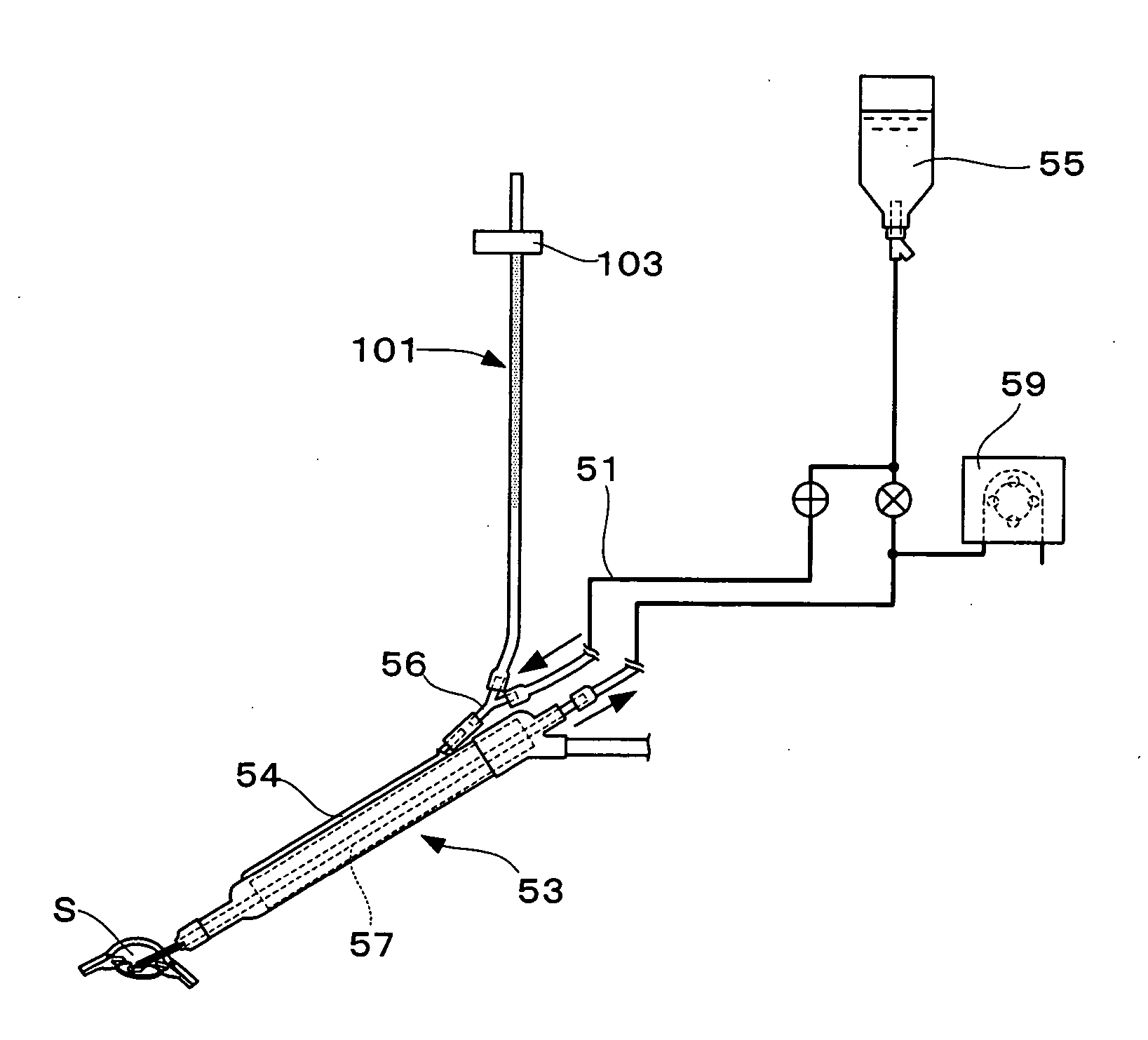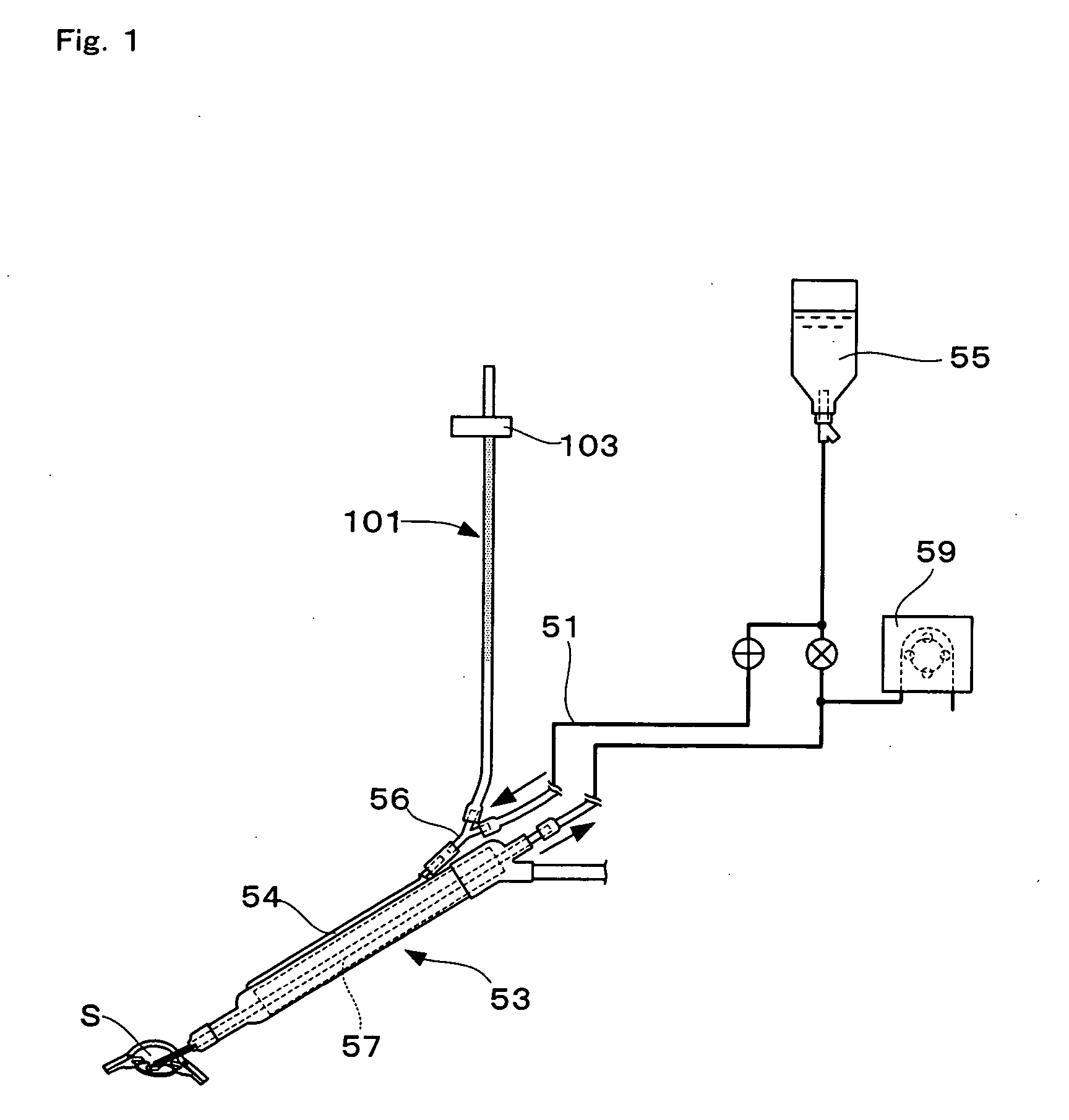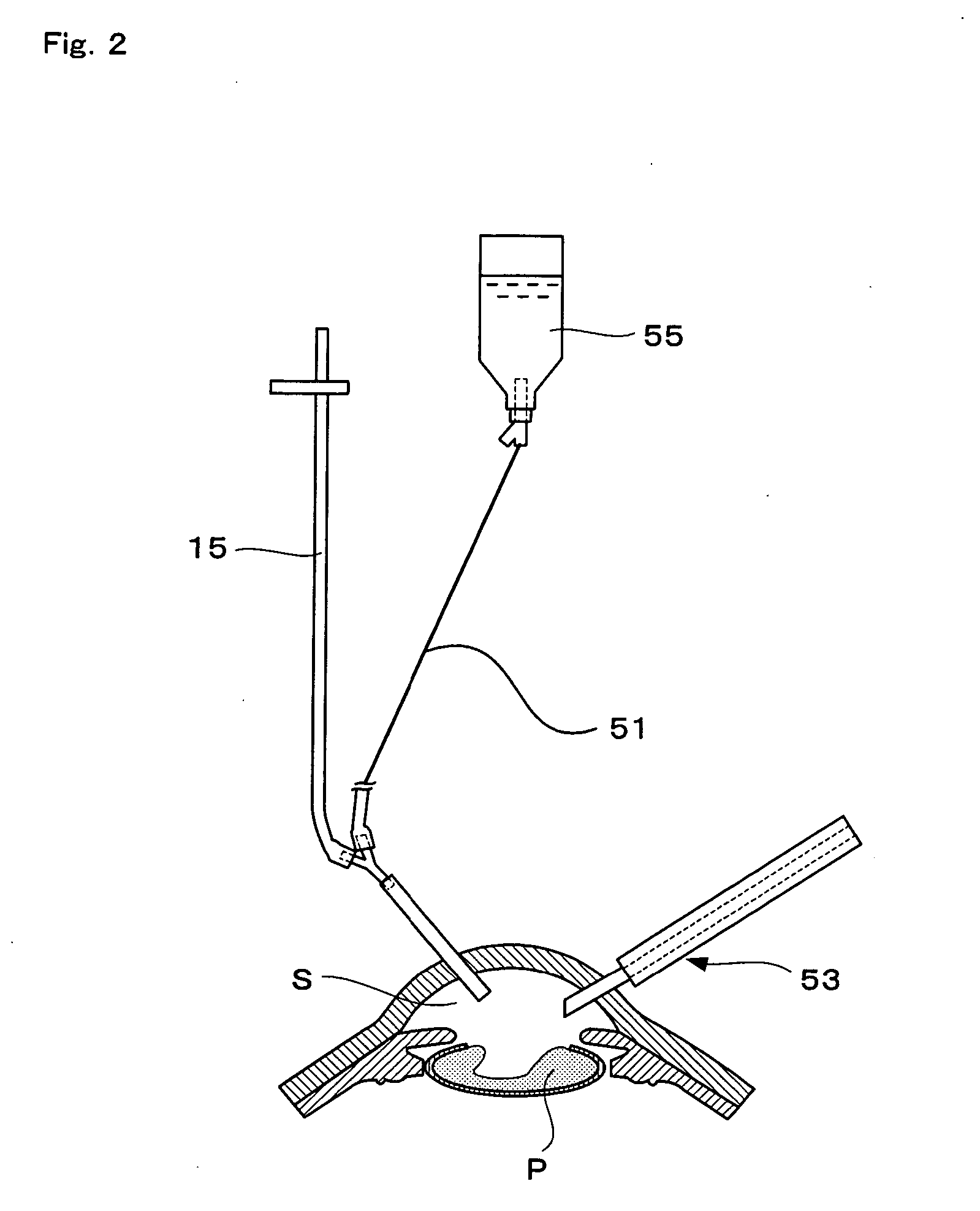Decompression-compensating instrument for ocular surgery, instrument for ocular surgery provided with same and method of ocular surgery
a technology of compensating instruments and ocular surgery, which is applied in the field of compensating instruments for ocular surgery, can solve the problems of adverse effects, further destruction of the posterior chamber, and damage to the corneal endothelium, and achieve the effect of reliably reducing the pressure in the anterior chamber
- Summary
- Abstract
- Description
- Claims
- Application Information
AI Technical Summary
Benefits of technology
Problems solved by technology
Method used
Image
Examples
example
[0078] Hereunder, details of experiments conducted with the present invention are explained with reference to the drawings to further clarify the features of the present invention. FIG. 6 is a drawing schematically showing the structure of the experimental apparatus.
[0079] The capacity of the tube is explained below.
experiment 1
(a) Experiment 1
[0080] Focusing on the fact that the pressure in the anterior chamber during a surge changes in accordance with the pressure in the tube, experiments were conducted in which the capacity of the tube was varied. As shown in FIG. 6, the experimental apparatus used here comprises a handpiece 11, which is a phacoemulsification and aspiration device, and a perfusate bottle 13, which stores the perfusate, connected to the handpiece 11. The handpiece 11 is a piezoelectric, small phaco handpiece manufactured by AMO, which incorporates an inlet channel 17 for supplying the perfusate to the intraocular anterior chamber and an aspiration channel (not shown) through which the perfusate aspirated from the anterior chamber is sent. A cataract surgical device 27 is connected to the rear end portion of the aspiration channel via an aspiration tube 29. This surgical device 27 aspirates perfusate at a predetermined aspiration pressure. In this experiment, a “Series 2000 LEGACY ®” ultr...
experiment 1-1
[0085] The experiment method is described next. A perfusate was supplied to the perfusate tube 15 so as to compress the air in the tube 15. General perfusion was then conducted by setting the aspiration flow rate of the cataract surgical device 27 at 30 cc / min and the maximum aspiration pressure at 200 mmHg. After blocking the aspiration tube 29 with a clamp, the aspiration tube 29 was opened and the change in the pressure of the mock anterior chamber 31 was then measured. This change was defined as the change in pressure during the surge. FIG. 7 shows the results. In FIG. 7, the longitudinal axis indicates the pressure of the mock anterior chamber 31 during the surge, and the horizontal axis indicates the length of the tube 15. As is clear from FIG. 7, when the length of the tube was 60 cm or more, the pressure during the surge did not become negative, and when the length of the tube was 100 cm or more, the tube 15, which serves as a decompression-compensating instrument, operated ...
PUM
 Login to View More
Login to View More Abstract
Description
Claims
Application Information
 Login to View More
Login to View More - R&D
- Intellectual Property
- Life Sciences
- Materials
- Tech Scout
- Unparalleled Data Quality
- Higher Quality Content
- 60% Fewer Hallucinations
Browse by: Latest US Patents, China's latest patents, Technical Efficacy Thesaurus, Application Domain, Technology Topic, Popular Technical Reports.
© 2025 PatSnap. All rights reserved.Legal|Privacy policy|Modern Slavery Act Transparency Statement|Sitemap|About US| Contact US: help@patsnap.com



